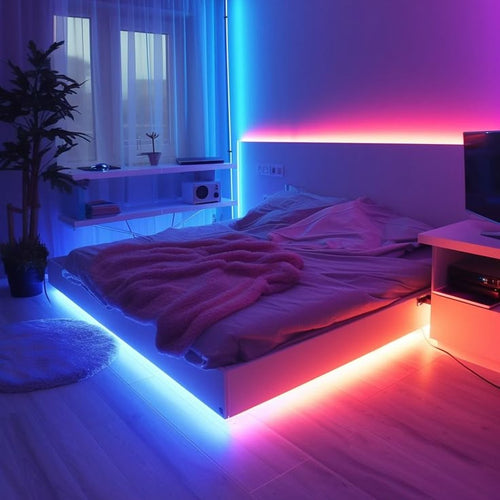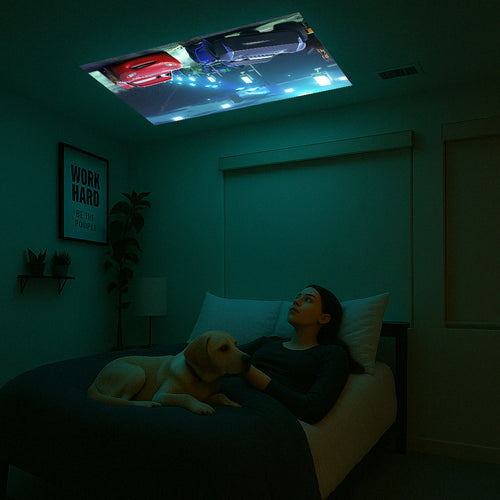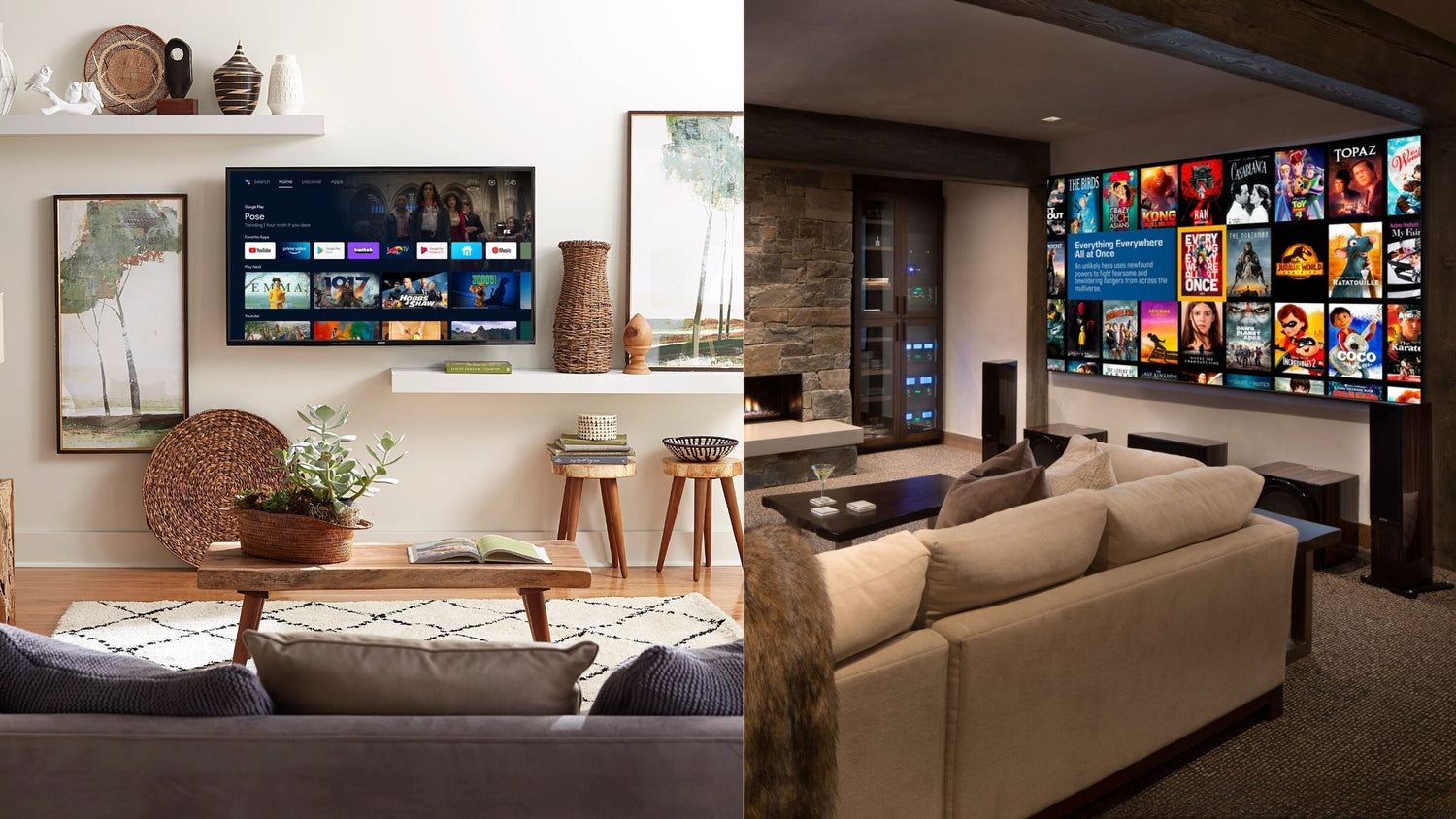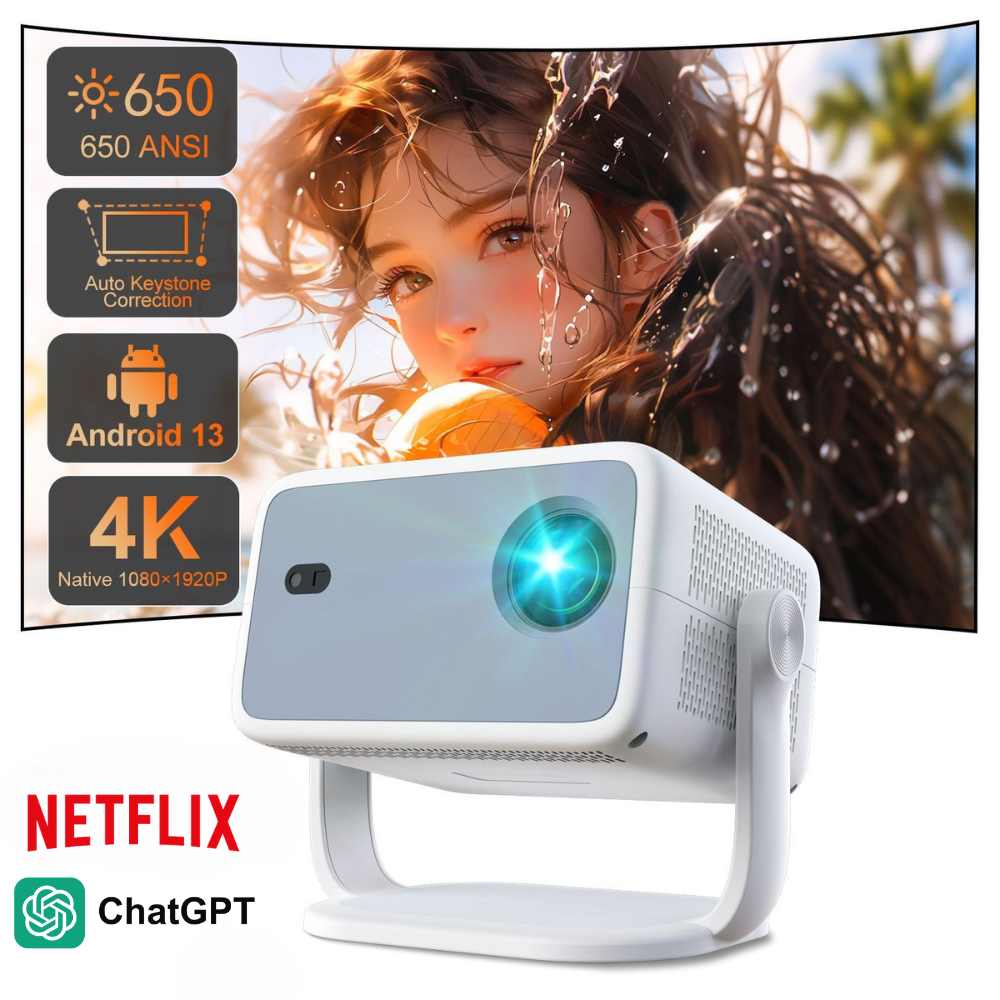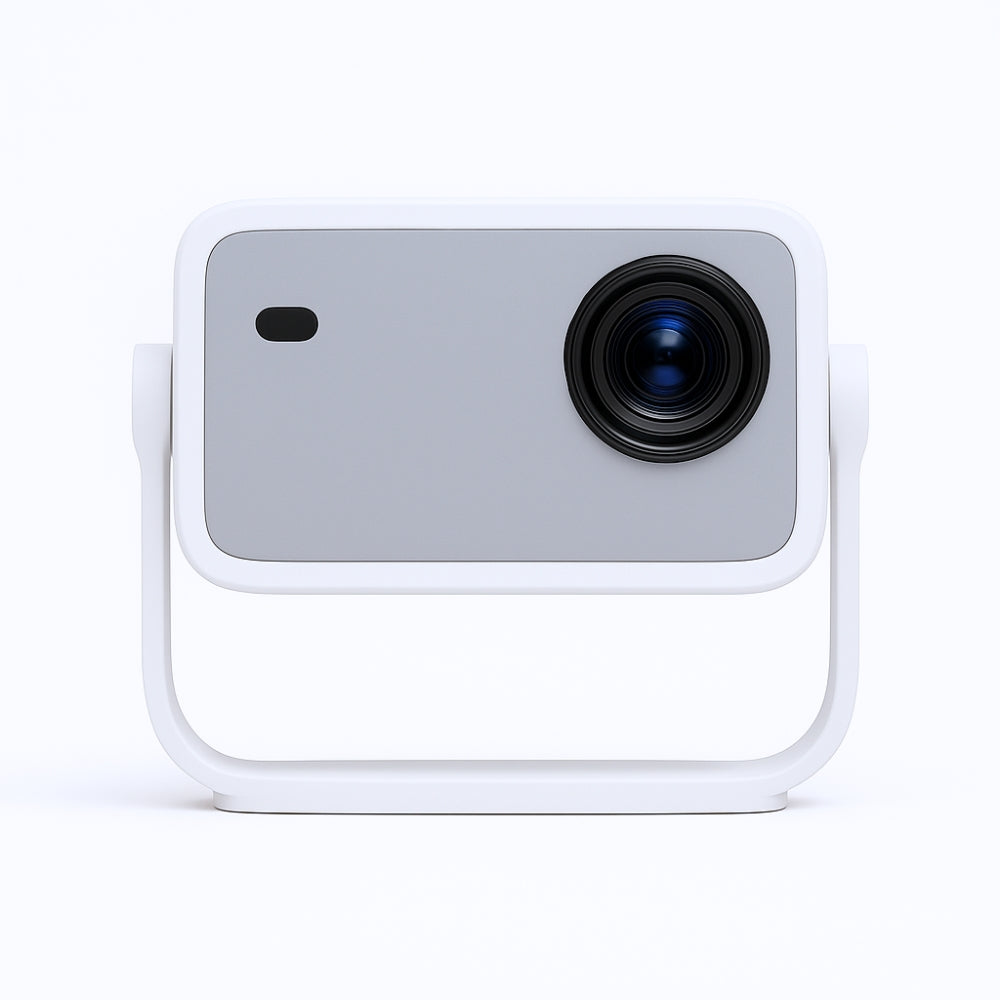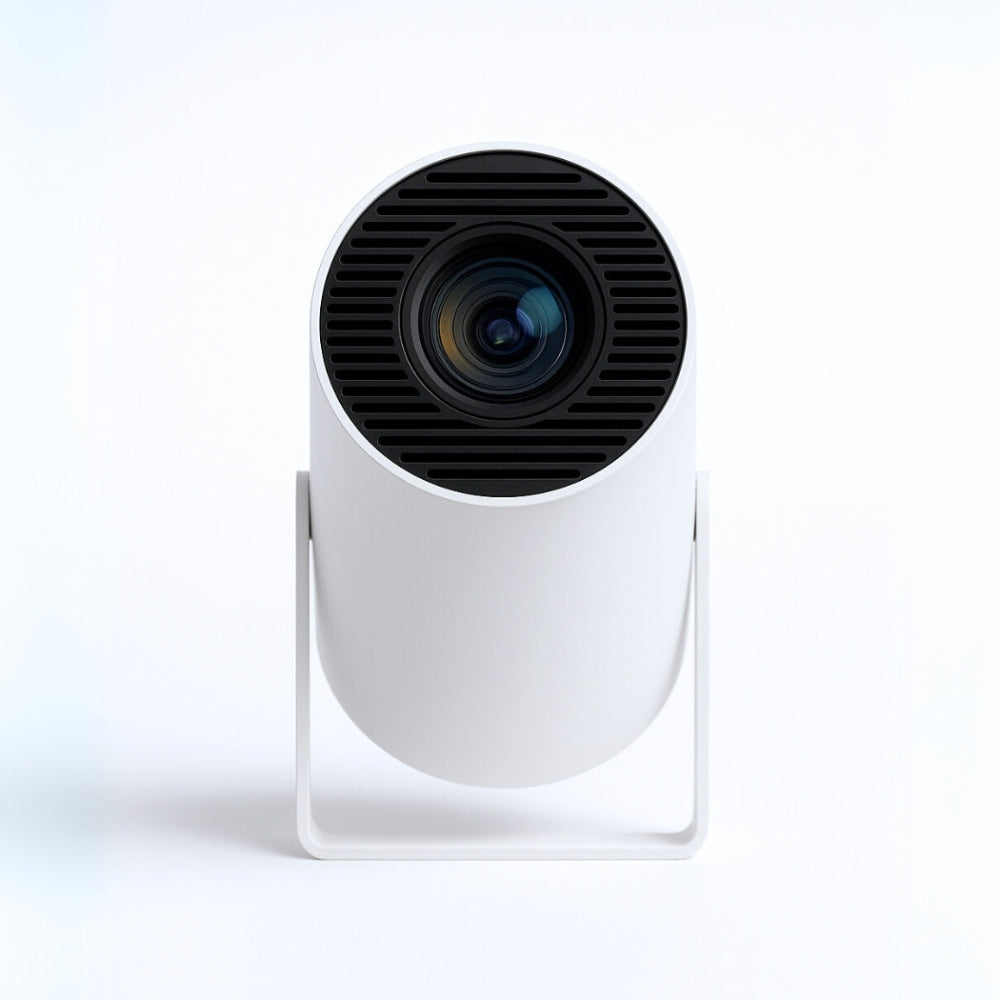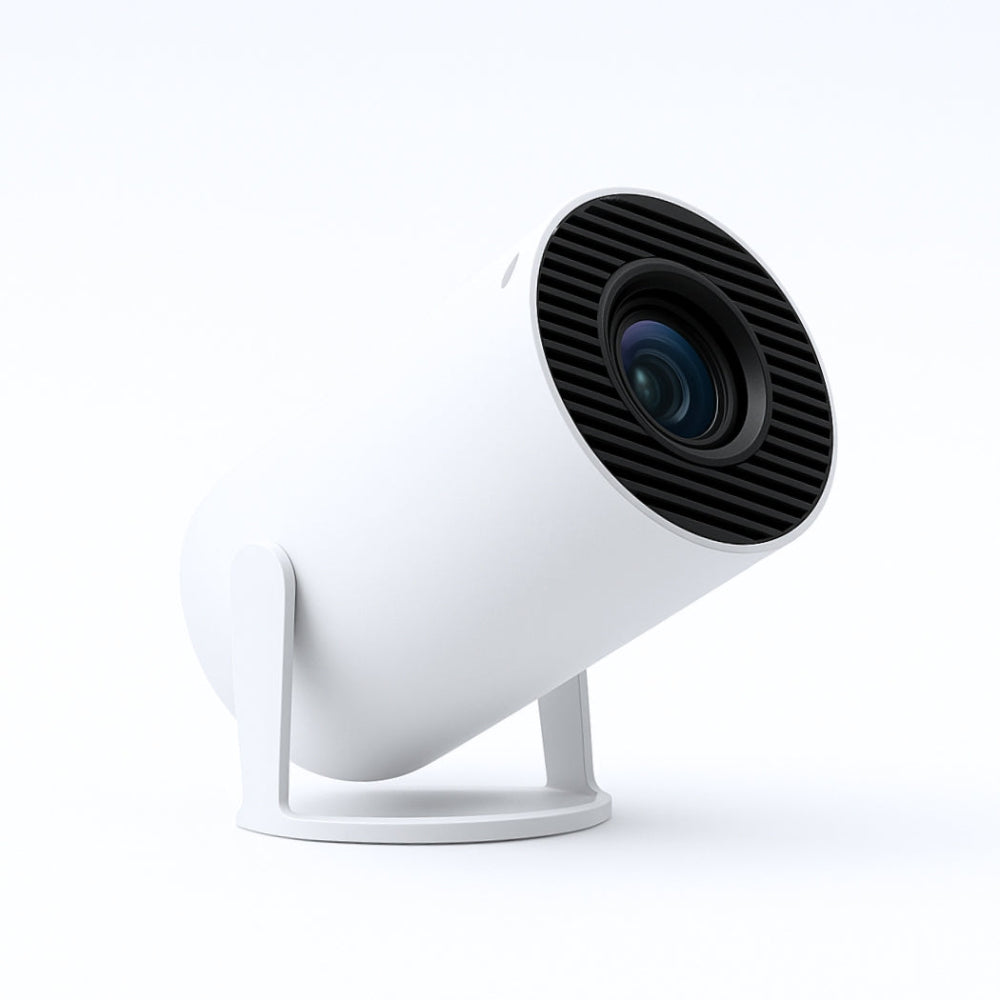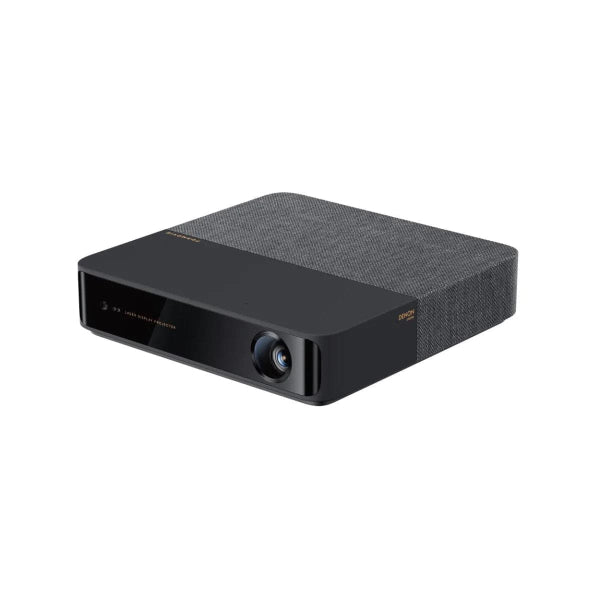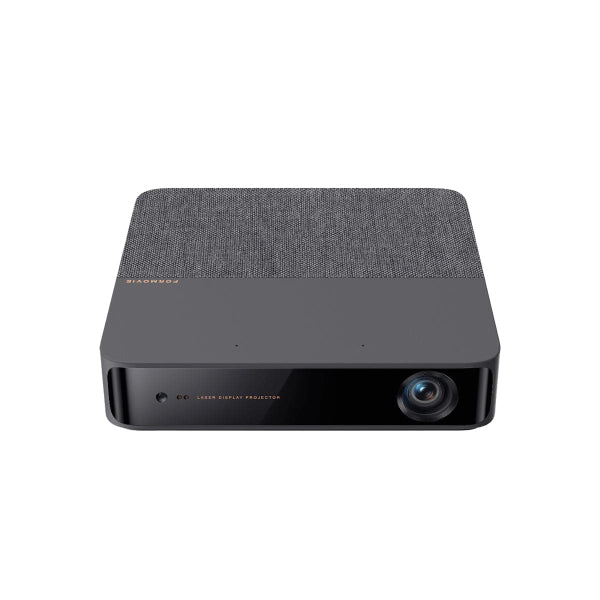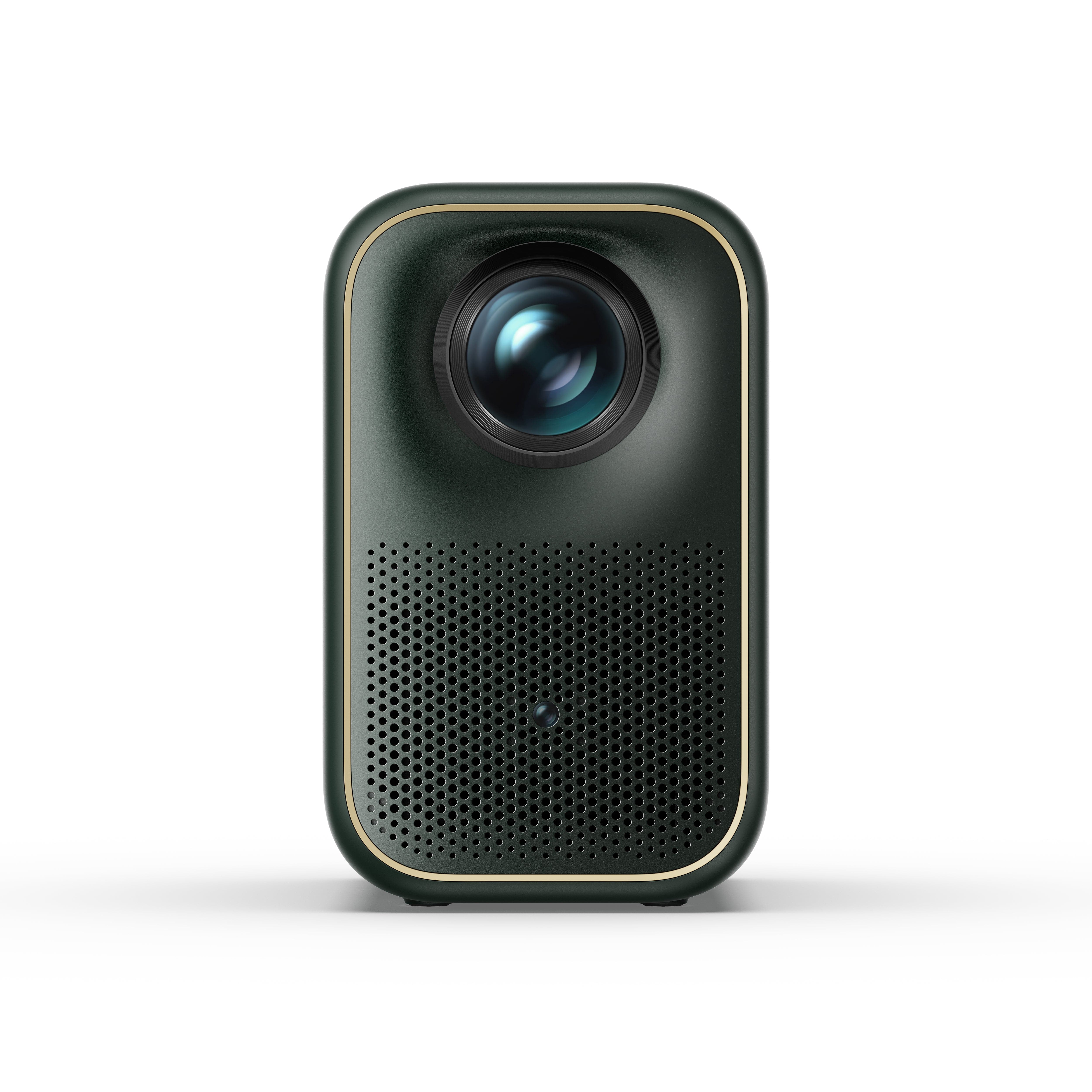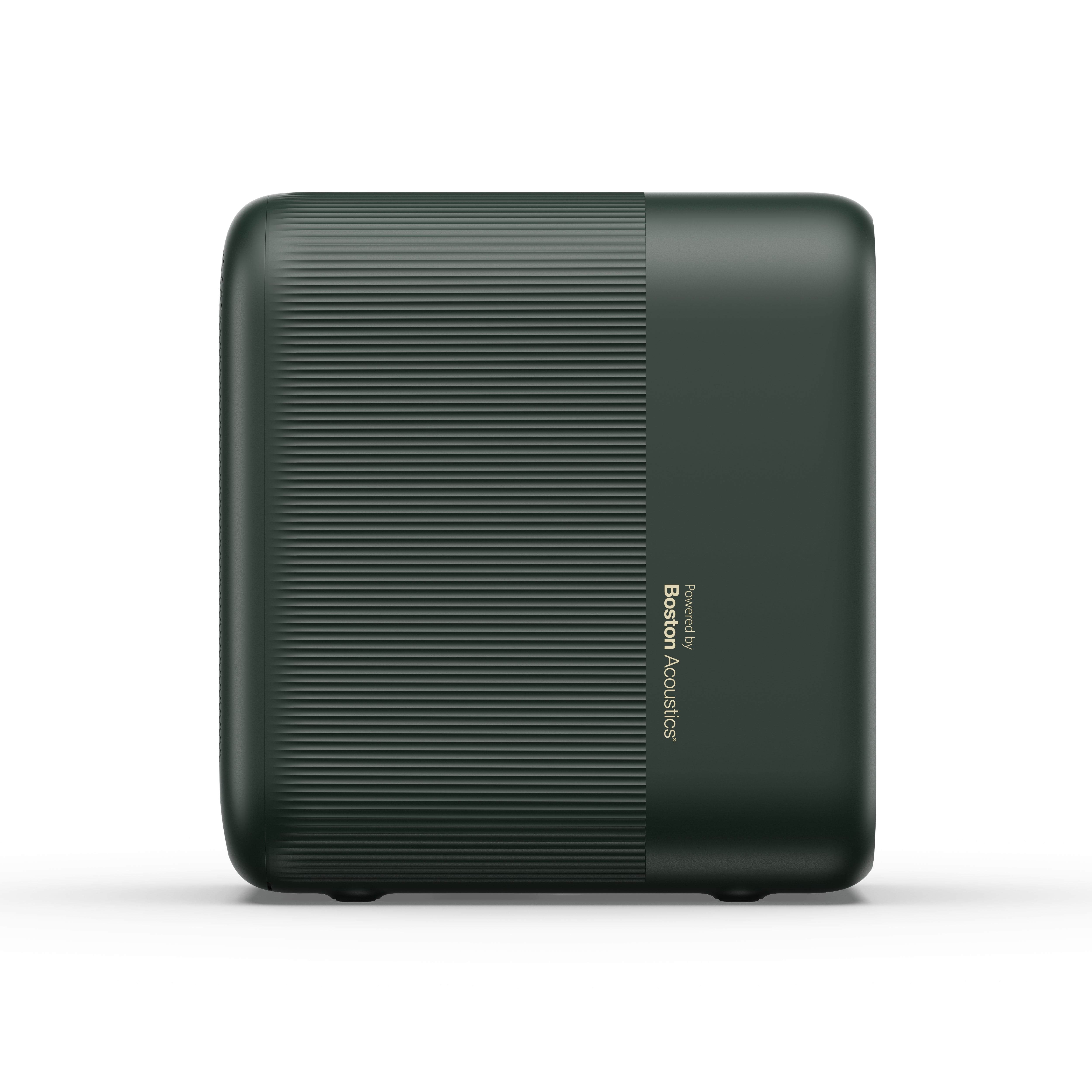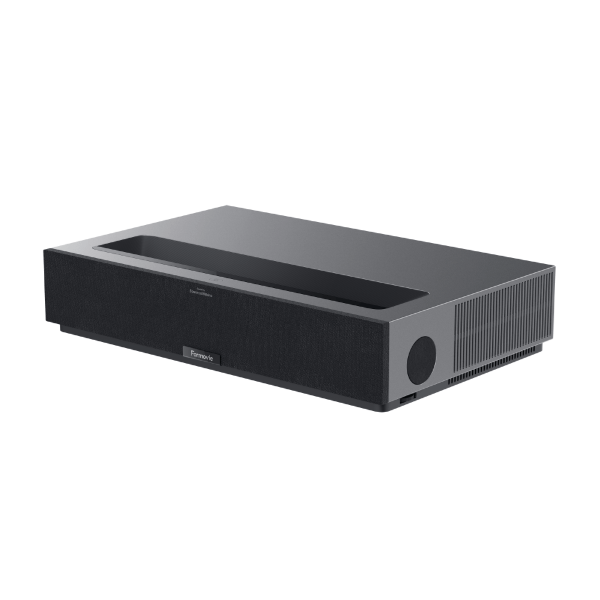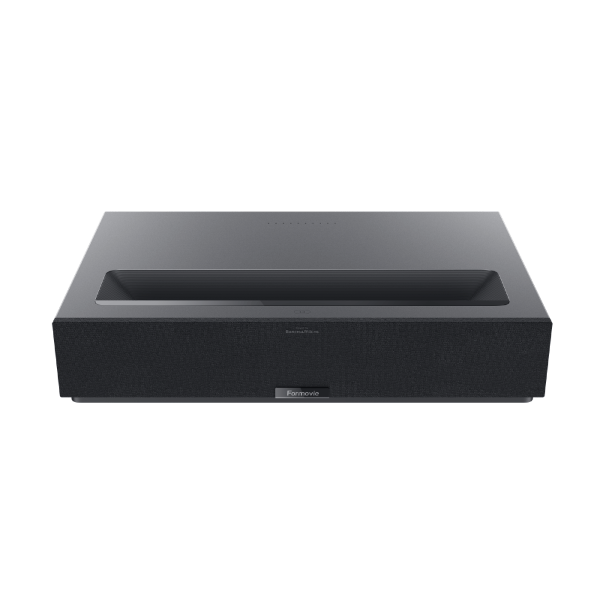Thinking about upgrading your home entertainment setup? The age-old question pops up: projector or TV? With technology evolving fast, deciding which screen reigns supreme in 2025 isn't straightforward. Are projector TVs (or rather, projectors themselves) actually any good compared to their flat-screen cousins? Let's dive in and break down the key differences to help you make the best choice for your movie nights, gaming sessions, or binge-watching marathons. We'll keep it clear, honest, and maybe even a little fun.
Picture Quality: A Visual Comparison
Okay, let's talk visuals – often the biggest deal-breaker (or maker!). Picture quality is where the battle between TVs and projectors gets really interesting because it directly shapes how much you enjoy what you're watching.
Generally speaking, TVs, especially those shiny 4K or OLED models, tend to win in the brightness and sharpness department. They handle well-lit rooms like champs, delivering crisp images without you needing to draw the curtains. However, projectors bring the magic, especially in darker environments. They can absolutely deliver a stunning, cinematic experience resolutions with 4K projectors.
A huge plus for projectors? Variable image size. You can often adjust the picture size significantly while keeping things in focus, making it possible to get truly massive displays that suck you right into the action. TVs, on the other hand, have a fixed size, which means consistent clarity but no flexibility if you want to go bigger (or smaller) without buying a whole new unit.
4K TV Resolution Clarity
When it comes to 4K TV resolution, the clarity is undeniable. You get sharper, more defined images compared to lower resolutions. It's like upgrading from standard definition to HD, but even better. Interestingly, on a 4K TV, sometimes things look a bit smaller because the image doesn't need to stretch to fill the screen – it's just packed with more detail (pixels).
4K TVs also usually handle HDR (High Dynamic Range) content better, giving you those deep blacks, vibrant colors, and stunning contrast that make visuals pop. While projectors *can* offer 4K resolution, TVs are often seen as having the edge in overall picture quality, especially straight out of the box. Some projectors use tricks like '4K Enhancement Technology' to mimic 4K, but let's be real – native 4K on a quality TV often looks superior.
Expansive Screen Potential of Projectors
Here's where projectors really flex their muscles: screen size. We're talking potential image sizes ranging from a small 30 inches all the way up to a whopping 300 inches! Compare that to typical TV sizes (usually topping out around 85 inches, unless you have a *very* generous budget), and you see the appeal. This makes projectors fantastic for creating that authentic home cinema vibe.

The ability to adjust the screen size also gives projectors incredible adaptability. Got a huge wall? Go big! Moving to a smaller space? Shrink it down. Plus, projectors often give you more screen real estate for your money – better value if a massive, immersive viewing experience is your top priority. Filling your field of vision, especially in a dark room, is something projectors do exceptionally well.
Unique Strengths in Clarity and Resolution
Don't count projectors out on the clarity front, though. Many modern projectors boast native 4K resolution, delivering incredibly lifelike and detailed visuals perfect for that cinematic feel. Some even use advanced tech like laser light sources, pushing image sharpness and quality beyond what older projector models could achieve.
In fact, recent developments mean high-end projectors can now go head-to-head with TVs on key specs like resolution, contrast, HDR support, and color depth. And remember that variable image size? It means you can sometimes fine-tune sharpness by adjusting the projection size. Technologies like LCD and DLP in newer projectors are consistently producing sharp, vibrant images suitable for all sorts of entertainment.
Quick Takeaway: TVs generally offer better brightness and sharpness, especially in lit rooms. Projectors excel at massive screen sizes and delivering a cinematic feel, particularly in dark rooms. Both can offer stunning 4K quality.
Setup and Installation: Ease and Flexibility
Setting up your screen is another key difference. Projectors often win on flexibility. You can place them in various spots, move them between rooms, or even take them outside – try doing that easily with an 85-inch TV! TVs, once mounted or placed, tend to stay put.

Modern projectors, like the Xgimi Halo, are getting seriously user-friendly. Features like 'Auto Keystone Correction' can automatically adjust the image to fit your wall or screen perfectly. Add real-time autofocus and obstacle avoidance, and setup becomes way less fiddly than it used to be. Many portable projectors even come with handles for easy carrying.
Plus, many higher-end projectors now include built-in streaming platforms (like Google TV or Android TV), these, which we call smart projectors, meaning you might not even need a separate streaming stick or box. Plug it in, connect to Wi-Fi, and you're good to go.
Projector Placement Flexibility
Let's hammer this home: projector placement flexibility is a huge plus. You can easily shift a projector from the living room for movie night to the bedroom for late-night viewing, or even to the backyard for an outdoor cinema experience. They don't demand a permanent spot like a TV often does – any blank wall or screen will do.
Their generally lighter weight makes them genuinely portable around the house. This freedom allows you to adjust your viewing setup based on the occasion or room layout, without committing to bulky furniture or wall mounts needed for large TVs.
Ambient Light Management Issues
Okay, here's a big challenge for projectors: ambient light. Any light in the room – sunshine, lamps, even a bright phone screen – can wash out the projected image, making it look faded, especially the dark parts. This is probably the biggest hurdle for projectors being 'good' for everyday, daytime use.

While things like ultra-short throw (UST) projectors paired with special Ambient Light Rejecting (ALR) screens can make a massive difference (seriously, some setups look almost like TVs even with lights on!), these screens can be pricey. Trying to get the full impact of HDR content is also tougher in brighter rooms because the projector struggles to maintain deep blacks and contrast. So, for the best projector experience, controlling room lighting is often key.
Heads Up: Projectors hate ambient light. While solutions exist (like ALR screens), they add cost. TVs handle bright rooms much better straight out of the box.
Ease of TV Setup with Built-in Sound
TVs are champions of simple setup. Find a space, plug it in, maybe connect to Wi-Fi, and you're basically done. While their built-in speakers have gotten better, let's be honest, the super-thin designs don't leave much room for booming audio. That's why soundbars are so popular – they easily integrate and give you that audio punch the TV speakers might lack.
Still, having those built-in speakers means a TV works perfectly fine on its own right away. You *can* hook up elaborate sound systems to TVs, just like projectors, but you don't *have* to for basic functionality. For immediate, hassle-free viewing with decent sound, TVs have a slight edge.
Size and Portability Considerations
When it comes to sheer size, projectors are the undisputed champs. Getting an image of 130 inches or more is relatively common and affordable with a projector, whereas TVs of that size are rare, incredibly heavy, and cost a small fortune.
The screen size is also incredibly adaptable. You can adjust it to fit the wall, your mood, or the number of people watching. And portability? Many projectors are designed to be lightweight and easy to move. Want movie night in the basement? Game day in the living room? Outdoor screening? A portable projector makes it possible.
From a cost perspective, projectors often offer more inches per dollar. You get a massive visual experience for potentially less money than a comparably large (though likely smaller) TV. Their ability to project onto different surfaces (though a dedicated screen is usually best) adds to their versatility.
Benefits of Mini and Short-Throw Projectors
Not all projectors are huge beasts. Mini projectors offer incredible portability, perfect for travel, kids' rooms, or setting up a quick movie night on the patio. Then there are short-throw projectors, which are game-changers for smaller rooms. They can cast a huge image from just inches or a few feet away from the wall, overcoming space limitations.

Both mini and short-throw models can still provide that cinematic feel, especially when paired with a decent sound system. They offer unique setup possibilities (think ceiling mounts or discreet placements) and can be surprisingly affordable, sometimes priced similarly to smaller TVs but with the potential for much larger, adjustable displays.
Ultra-Short-Throw Projectors: Pros and Cons
Ultra-short-throw (UST) projectors are a special breed, designed to sit right under the screen, much like a TV console. They aim to be direct TV replacements, offering huge images (often 100-120 inches) from practically no distance, reducing shadows and setup complexity.
Sounds perfect, right? Well, there are trade-offs. UST projectors tend to be more expensive than both traditional projectors and many large TVs. While placement is easier in some ways (no ceiling mount needed), their performance, especially in brighter rooms, might not always justify the premium price tag compared to a high-quality TV or even a standard-throw projector setup. You might also need specific furniture or setup adjustments, and potentially extra cables or adapters.
Evaluating Cost and Value
Let's talk money. One of the biggest arguments for projectors is cost per inch. You can get a massive 100-inch+ image for significantly less money than a 100-inch TV (if you can even find one easily). This makes projectors a very economical way to go big.
A TV is an all-in-one package, but getting into larger sizes (say, 75 inches and up) gets expensive quickly. While a projector setup might require extra purchases – like a screen (recommended for best quality) and potentially a separate sound system – the total cost for a giant, immersive experience can still be lower than a giant TV.
The initial investment might seem higher if you factor in accessories, but many feel the cinema-like experience offers great long-term value. Plus, modern projector tech has come a long way, addressing old issues and delivering high-quality audio-visuals that seriously compete with TVs.
Price Ranges of Projectors vs. TVs
So, what are the actual numbers? You can snag a decent entry-level OLED TV for around $1,000, especially during sales. High-end projectors capable of true 4K often start around $3,000 and can go up to $5,000 or more, though you can find good 1080p or budget 4K models for less. A projector like the BenQ HT2060, often highlighted as a top budget pick under $1,000, offers a great cinematic experience without all the bells and whistles like built-in Wi-Fi.
The key takeaway remains: projectors offer a lower cost per screen inch. Once TVs get larger than about 65 or 75 inches, their prices skyrocket, often making a projector setup the more affordable route for a truly massive display.
Balancing Initial Investment with Long-term Value
Thinking long-term? Projector lamp life used to be a big concern, but things have improved. Newer lamp-based models can last up to 5,000 hours. Even better, Laser and LED projectors boast lifespans of 20,000 hours or more – that's years of viewing without worrying about replacements, offering fantastic long-term value.
Considering you can get screen sizes up to 120 inches or more cost-effectively, projectors deliver significant value for money if size matters most. Many now also integrate smart features (like streaming apps), just like TVs, enhancing their functionality over time. While a TV might have a lower *initial* cost for smaller sizes, the flexibility and sheer scale of a projector can offer greater perceived value down the line, even if the upfront cost is a bit higher.
Value Proposition: Projectors win on cost-per-inch for large sizes. TVs are often cheaper initially for smaller/medium sizes. Consider long-term value (lamp/laser life) and potential extra costs (screen, sound system) for projectors.
Functionality and Features
Modern projectors aren't just dumb boxes anymore. Many come packed with smart features (smart projectors). Technologies like Intelligent Environment Adaptation automatically adjust the picture to fit your room, making setup a breeze. Integration with platforms like Android TV 10.0 gives you access to thousands of apps (think Netflix, Hulu, Disney+) and a massive library of movies and shows, just like a smart TV.
High resolutions like 4K UHD are becoming common, ensuring sharp, detailed images. Audio is improving too, with some projectors featuring surprisingly decent built-in speakers (like dual tweeters and woofers) that can deliver an immersive sound experience, though audiophiles will still want an external system.
With multiple connectivity options (HDMI, USB, Wi-Fi, Bluetooth), smart features, and high resolutions, today's projectors are strong contenders against TVs for creating a feature-rich, large-screen entertainment hub.
Integration with Existing Technology
Worried about compatibility? Don't be. Projectors can display anything a TV can – movies from Blu-ray players, content from streaming sticks, gameplay from consoles, shows from cable boxes. You just need the right connections (usually HDMI).
As mentioned, projector quality has significantly improved, offering visuals that rival TVs in many aspects, especially in controlled environments. A good quality projector (like a 4K model) used in a suitable room (darker is better) can provide an incredibly immersive experience for sports, movies, or gaming. Pro tip: using blackout curtains can seriously boost a projector's performance during the day by cutting down that pesky ambient light.
Remote and Smart Features Availability
Smart capabilities are now pretty standard on many mid-range and high-end projectors. Expect to find features like built-in Wi-Fi, smart TV interfaces (like Google TV or proprietary systems), and app stores, allowing you to stream content directly without extra devices. Models like the Nebula Cosmos 4K SE explicitly market their smart features.
This means you can often control your projector with a smart remote (sometimes with voice commands), access your favorite streaming services, and even manage compatible smart home devices, mirroring the convenience offered by modern smart TVs.
Versatility of Projector Functions
The versatility of projectors extends beyond just screen size. While the ability to project massive 100 to 150-inch (or larger) images is a primary draw, other aspects add to their appeal. Many models now include quite capable internal speakers, good enough for casual viewing without needing an immediate soundbar purchase.
Short-throw and ultra-short-throw models offer placement flexibility even in tight spaces. Portable projectors bring entertainment anywhere. And technologies like 4LED light sources not only extend lifespan but also help prevent issues like dead pixels or uneven lighting sometimes seen in older display tech.
Energy Consumption and Efficiency
Something maybe you haven't considered: energy use. How much electricity does each option gobble up? Projectors typically consume anywhere from 150 to 800 watts per hour, a pretty wide range depending heavily on the model, brightness setting, and technology (lamp vs. laser/LED).
Their flexible setup and potentially massive screen size can influence overall energy use compared to a TV. While modern TVs have become much more energy-efficient (especially LED models), a very large TV might still draw significant power. Projectors, needing bright light sources, can sometimes be more power-hungry, especially older lamp-based models or when run at maximum brightness.
Intelligent features on some projectors might help optimize energy use slightly. It's a bit of a trade-off: projectors offer screen size potential that TVs can't match affordably, but this might come at the cost of higher energy consumption, especially compared to an energy-efficient, moderately sized TV.
Understanding Energy Use in Projectors
That range of 150 to 800 watts per hour for projectors is significant. Why the big difference? It depends on the projector type (DLP, LCD, Laser, LED), its brightness rating (lumens), and the resolution. A bright, 4K lamp-based projector running full tilt will use much more power than a small, portable LED projector.
It's worth checking the specs of any projector you're considering if energy consumption is a major concern for you, especially if you plan on using it frequently for long periods.
Energy Consumption Comparisons with TVs
So how do they stack up directly? While projector usage varies (150-800W), modern TVs, particularly LED ones, are often quite efficient. A typical 55-inch LED TV might only use 50-100 watts. Even larger TVs have improved significantly.
Projectors generally need more juice, primarily because creating a very bright image to throw across a room requires a powerful light source. TVs create light directly behind the pixels (or the pixels themselves are the light source, like OLED), which can be more energy-efficient for achieving perceived brightness. For everyday, casual viewing, especially in brighter rooms where a projector needs to work harder, a TV will likely consume less energy.
Energy Check: TVs are generally more energy-efficient, especially newer LED/OLED models. Projectors, particularly brighter or older lamp models, can use significantly more power. Check the wattage specs if this is important to you.
User Experience: Which Delivers Better Entertainment?
Alright, bottom line: which one gives you a *better* entertainment experience? It really depends on what you value most.
Projectors undeniably offer a more immersive, cinematic experience thanks to that massive screen size. Watching a blockbuster movie or playing an epic game on a 120-inch screen just hits differently. Their flexibility in placement (room-to-room, outdoors) offers a unique versatility TVs can't touch.
However, TVs generally provide sharper images with better contrast and brightness, especially in rooms that aren't pitch black. They are simpler to use day-to-day – just turn on and watch. While projectors offer amazing scale, achieving the *best* experience often requires more effort: managing ambient light, potentially investing in a good screen and sound system. A TV is more of an easy, reliable, all-in-one solution.
Value-wise, projectors give you more screen size for your buck, but TVs might be more cost-effective overall if you don't need a gigantic display or prefer plug-and-play simplicity.
Immersive Cinematic Experiences
If feeling like you're *in* the movie is your goal, projectors are hard to beat. Display sizes ranging from 100 to 300 inches create a truly captivating, movie-theater atmosphere right in your home. The sheer scale draws you into the content in a way smaller screens can't.
Even with advancing TV tech, the ability of a projector (especially UST models in controlled lighting) to fill your field of vision provides a uniquely breathtaking cinematic feel. It's an engaging choice for dedicated movie buffs and gamers looking for maximum immersion, often at a lower cost than a similarly massive (and likely unavailable) TV.
Reliability and Consistency: Traditional TV Comfort
For everyday viewing, the reliability and consistency of a traditional TV are comforting. They generally handle brightness and contrast better, making them great for watching the news in the morning, cartoons with the kids, or catching a show in the evening without needing perfect lighting conditions.
Setup is straightforward, and they handle HDR content beautifully, delivering those vibrant, lifelike images consistently. If you value ease of use, dependable picture quality in various lighting, and don't want to fuss with room adjustments or extra equipment, a TV offers a more predictable and often more convenient experience. Plus, for similar resolutions (like 4K), TVs can often be more budget-friendly than high-end projectors.
Conclusion: Making the Right Choice for 2025
So, are projector TVs (projectors) any good in 2025? Absolutely, yes! But are they the *right* choice for *everyone*? Maybe not.
Here's the deal: Choose a projector if:
- You crave a truly massive screen (100 inches+) for an immersive, cinematic feel.
- You have a dedicated space (like a home theater or basement) where you can control ambient light.
- You value screen size flexibility and potential portability.
- You're looking for the most screen inches per dollar.
Stick with a TV if:
- You primarily watch in brighter rooms or during the day.
- You prioritize crispness, contrast, and brightness consistency across all content.
- You prefer a simple, all-in-one setup with minimal fuss.
- You're looking for screen sizes up to about 75-85 inches (where TV prices are more competitive).
Keep in mind that projector tech has improved massively. Brightness is better (look for high ANSI lumens if daytime viewing is needed, though blackout curtains still help!), resolutions are sharp (4K is common), and smart features abound. Meanwhile, large TV prices have dropped. The choice in 2025 is less about "which is better?" and more about "which is better *for my specific needs and space*?"
Assessing Your Space and Needs
Think honestly about your room. How much light can you control? Do you have a large, blank wall or space for a screen? Projectors offer amazing placement flexibility but perform best when ambient light is minimized. TVs handle varied lighting better but need a fixed spot.
Consider setup effort. Projectors might need keystone/focus adjustments (though many automate this now), while TVs are generally plug-and-play but can be cumbersome to mount. Also, think about sound – will you use built-in speakers (better on most TVs) or invest in an external system (often recommended for projectors to match the big picture)?
Prioritizing Personal Entertainment Preferences
Ultimately, it boils down to what *you* want from your entertainment. Are you a cinephile building a dedicated home theater? A projector might be your dream ticket. Are you a casual viewer who wants a reliable screen for news, shows, and occasional movies in the living room? A TV is likely the more practical choice.

Do you prioritize the 'wow' factor of a giant screen for movie nights and gaming, even if it means dimming the lights? Projector. Do you value razor-sharp clarity and vibrant colors in any lighting condition? TV.
By understanding these key differences in picture quality, setup, size, cost, and features, you can confidently decide whether a projector or a TV is the star of your 2025 home entertainment setup.


